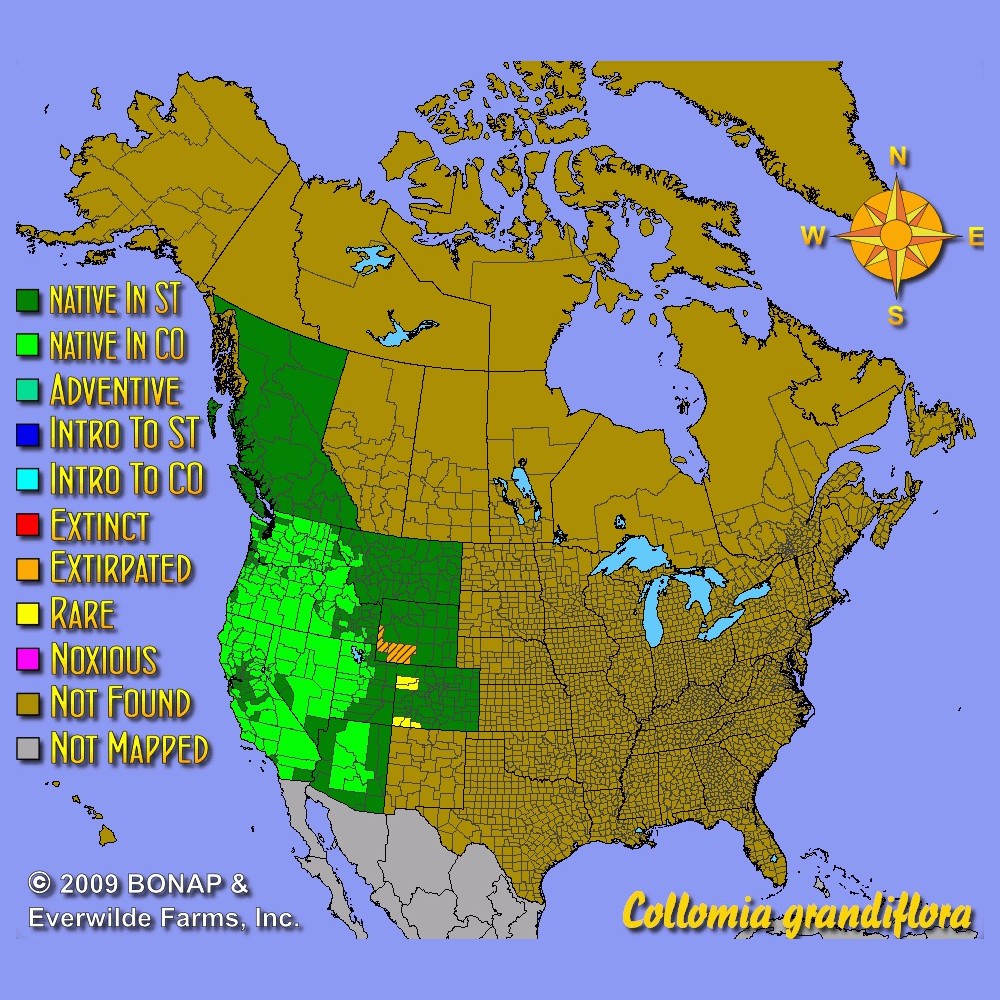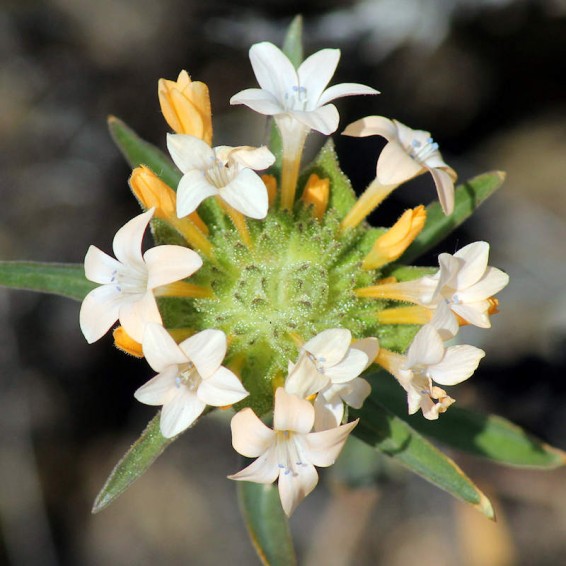Large Flowered Phlox Seeds
Collomia grandiflora
- HOW TO GROW
- FAST FACTS
HOW TO GROW
Sowing: Direct sow in late fall, planting the seed just below the surface of the soil. For spring planting, mix the seed with moist sand and store it in the refrigerator for 30 days before direct sowing. Keep the soil evenly moist until germination, which should occur within 15-30 days. The treated seeds can also be started indoors 6-8 weeks before the last frost of spring; plant the seeds on the surface of a flat, keeping the moisture consistent and the temperature around 65-70 degrees F. Transplant or thin seedlings.
Growing: Water the seedlings occasionally until they become established. This plant grows best in rich, well drained soil, though it adapts to sandy or rocky soil. Mature plants tolerate dry or poor soil, though they will be somewhat stunted; they achieve their full potential with adequate moisture. This plant grows best in moderate temperatures, and does not appreciate excess heat. It attracts bees, butterflies, and hummingbirds.
Harvesting: This delicate wildflower is best displayed in the garden or prairie, and does not make a suitable cut flower.
Seed Saving: After flowering, the plant will produce a pod with sticky seeds that turn brown when ripe. Since the pods explode when fully dry and ripe, check them often to prevent loss. Though the pods can be gathered individually as they ripen, an easier method is to pull the entire plant when the majority of the seed has ripened; hang it upside down in a protected area where the seeds can safely fall from the exploding pods. When the plant has dried completely, thresh the pods that have not split open to remove the rest of the seed. Store the cleaned seed in a cool, dry place.
FAST FACTS
Common Names: Large-flowered Mountain-trumpet, Grand Collomia, Large-flowered Collomia
Latin Name: Collomia grandiflora
Species Origin: US Native Wildflower
Type: Native Wildflowers
Life Cycle: Annual
USDA Zones: 3, 4, 5, 6, 7, 8, 9, 10, 11, 12
US Regions: California, Mountain, Arid/Desert, Plains/Texas, Midwest, Northern, Northeast, Southeast
Seeds per Ounce: 9,000
Stratification: Cold/Wet for 4 Weeks
Germination Ease: Stratify 4 Weeks
Sunlight: Full Sun, Part Sun
Height: 30 Inches
Color: White
Bloom Season: Blooms Early Spring, Blooms Late Spring
DESCRIPTION

HOW TO GROW
Sowing: Direct sow in late fall, planting the seed just below the surface of the soil. For spring planting, mix the seed with moist sand and store it in the refrigerator for 30 days before direct sowing. Keep the soil evenly moist until germination, which should occur within 15-30 days. The treated seeds can also be started indoors 6-8 weeks before the last frost of spring; plant the seeds on the surface of a flat, keeping the moisture consistent and the temperature around 65-70 degrees F. Transplant or thin seedlings.
Growing: Water the seedlings occasionally until they become established. This plant grows best in rich, well drained soil, though it adapts to sandy or rocky soil. Mature plants tolerate dry or poor soil, though they will be somewhat stunted; they achieve their full potential with adequate moisture. This plant grows best in moderate temperatures, and does not appreciate excess heat. It attracts bees, butterflies, and hummingbirds.
Harvesting: This delicate wildflower is best displayed in the garden or prairie, and does not make a suitable cut flower.
Seed Saving: After flowering, the plant will produce a pod with sticky seeds that turn brown when ripe. Since the pods explode when fully dry and ripe, check them often to prevent loss. Though the pods can be gathered individually as they ripen, an easier method is to pull the entire plant when the majority of the seed has ripened; hang it upside down in a protected area where the seeds can safely fall from the exploding pods. When the plant has dried completely, thresh the pods that have not split open to remove the rest of the seed. Store the cleaned seed in a cool, dry place.
FAST FACTS
Common Names: Large-flowered Mountain-trumpet, Grand Collomia, Large-flowered Collomia
Latin Name: Collomia grandiflora
Species Origin: US Native Wildflower
Type: Native Wildflowers
Life Cycle: Annual
USDA Zones: 3, 4, 5, 6, 7, 8, 9, 10, 11, 12
US Regions: California, Mountain, Arid/Desert, Plains/Texas, Midwest, Northern, Northeast, Southeast
Seeds per Ounce: 9,000
Stratification: Cold/Wet for 4 Weeks
Germination Ease: Stratify 4 Weeks
Sunlight: Full Sun, Part Sun
Height: 30 Inches
Color: White
Bloom Season: Blooms Early Spring, Blooms Late Spring




